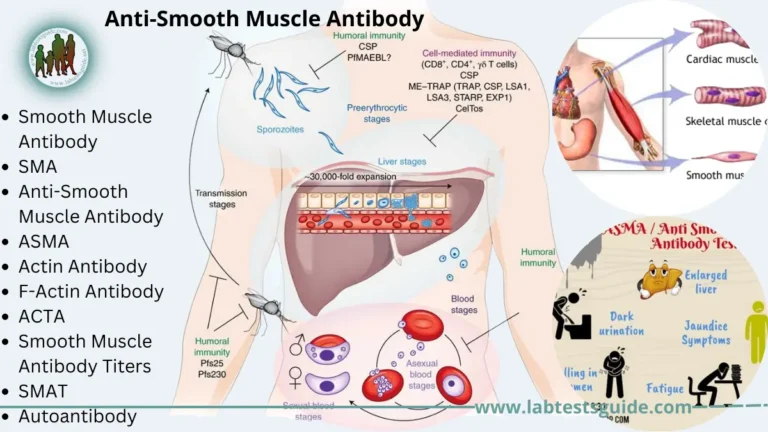The indirect Antiglobulin (IAT test) looks for antibodies that are floating around in the blood. These antibodies might act against certain red blood cells. This test is most often done to determine if you may be having a reaction to a blood transfusion.

| Also Known as | Indirect Coombs Test, Indirect Antiglobulin Test, IAT, Indirect Anti-human Globulin Test |
| Test Purpose | Indirect Coombs Test looks for antibodies that are floating around in the blood |
| Test Preparations | No Need any Preparations |
| Test Components | Indirect Coombs Test |
| Specimen | Indirect Coombs: 2 ML (1 ML Min.) Serum From 1 SST. |
| Stability Room | Indirect Coombs : 2 hours |
| Stability Refrigerated | Indirect Coombs : 48 hours |
| Stability Frozen | Indirect Coombs : N/A |
| Method | Erythrocyte Magnetised Technology |
| Download Report | Download Report |
Types of Coombs Test:
There are two different types of Coombs tests
- Direct Coombs Test:
The direct Coombs test (sometimes called the direct antiglobulin test) examines red blood cells to see if they have antibodies attached to them. It is often used to diagnose blood-related conditions, such as autoimmune hemolytic anemia. People with autoimmune hemolytic anemia don’t have enough red blood cells because their bodies destroy them too soon. - Indirect Coombs Test:
The indirect Coombs test tells your provider if there are antibodies present in your bloodstream that could attach to red blood cells. It is used as a screening process to see how you will react to a blood transfusion. An indirect Coombs test is also routinely done as part of prenatal testing.
Principle of Coombs’ Test
Red blood cells coated with complement or IgG antibodies do not directly agglutinate when centrifuged. These cells are said to be IgG or complement sensitized. For agglutination to occur, an additional antibody must be added to the system that reacts with the Fc portion of the IgG antibody, or with the C3b or C3d component of complement. This will form a “bridge” between the antibodies or complement that coats the red blood cells, causing agglutination.
Types of Coombs Test:
There are two different types of Coombs tests
- Direct Coombs Test:
The direct Coombs test (sometimes called the direct antiglobulin test) examines red blood cells to see if they have antibodies attached to them. It is often used to diagnose blood-related conditions, such as autoimmune hemolytic anemia. People with autoimmune hemolytic anemia don’t have enough red blood cells because their bodies destroy them too soon. - Indirect Coombs Test:
The indirect Coombs test tells your provider if there are antibodies present in your bloodstream that could attach to red blood cells. It is used as a screening process to see how you will react to a blood transfusion. An indirect Coombs test is also routinely done as part of prenatal testing.
Principle of Coombs’ Test
Red blood cells coated with complement or IgG antibodies do not directly agglutinate when centrifuged. These cells are said to be IgG or complement sensitized. For agglutination to occur, an additional antibody must be added to the system that reacts with the Fc portion of the IgG antibody, or with the C3b or C3d component of complement. This will form a “bridge” between the antibodies or complement that coats the red blood cells, causing agglutination.
Indirect Coombs Test Negative Result Mean:
No clumping of cells (no agglutination). This means you have no antibodies to red blood cells.
Indirect Coombs Test Positive Result Mean:
Clumping (agglutination) of the blood cells during a direct Coombs test means that you have antibodies on the red blood cells and that you may have a condition that causes the destruction of red blood cells by your immune system (hemolysis). This may be due to
- Hemolytic anemia,
- Chronic lymphocytic leukemia or similar disorder,
- Erythroblastosis fetalis (hemolytic disease of the newborn),
- Infectious mononucleosis,
- Mycoplasmal infection,
- Syphilis,
- Systemic lupus erythematosus and
- Transfusion reaction, such as one due to improperly matched units of blood.
A Positive Coombs test is seen in
A positive (abnormal) Coombs’ test means you have antibodies that can attack your red blood cells. This can be caused by various conditions, including:
- Autoimmune hemolytic anemia.
- Infectious mononucleosis.
- Chronic lymphocytic leukemia.
- Syphilis.
- Mycoplasma infection, a type of respiratory disease.
- Lupus.
- A negative reaction to a blood transfusion.
Positive test during Pregnancy mean
If you test positive during your pregnancy, it means you need to take steps to protect your baby from Rh sensitization.
Positive Coombs in Baby
Generally, a positive Coombs test result in babies indicates Anemia or Jaundice.
Meaning of Negative Coombs Test Result
A negative (normal) test result is good news. It means that no antibodies against red blood cells were found.
- You can safely receive donor blood during a transfusion.
- You don’t have to worry about Rh sensitization affecting your unborn baby.
Possible References Used




